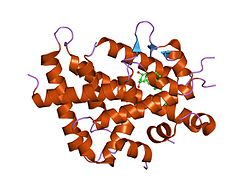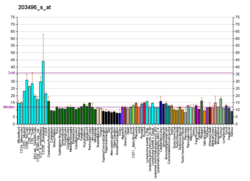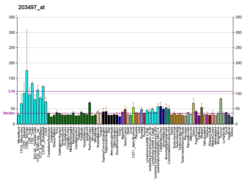Mediator of RNA polymerase II transcription subunit 1 also known as DRIP205 or Trap220 is a subunit of the Mediator complex and is a protein that in humans is encoded by the MED1 gene. [5] [6] [7] MED1 functions as a nuclear receptor coactivator.
| Med1 | |||||||||
|---|---|---|---|---|---|---|---|---|---|
| Identifiers | |||||||||
| Symbol | Med1 | ||||||||
| Pfam | PF10744 | ||||||||
| InterPro | IPR019680 | ||||||||
| |||||||||






